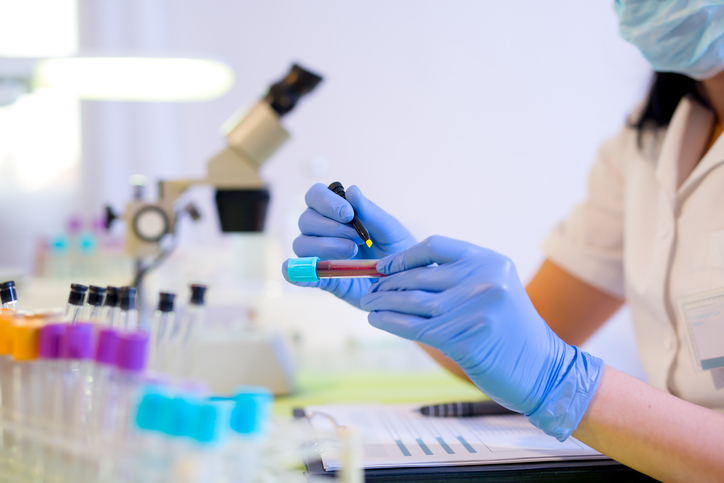Today is World Sepsis Day. This day happens every year and takes place as part of a UK-wide Sepsis Awareness Month in September.
World Sepsis Day was established by the Global Sepsis Alliance in 2012 with a mission to reduce the worldwide burden of sepsis. Every year events raising awareness of sepsis are organised all over the world. The events range from medical education, to information for laypeople, sport activities, fundraising events like pink picnics, and much more.
Sepsis accounts for at least 11 million deaths worldwide each year. World Sepsis Day provides an opportunity for people to unite in the fight against sepsis.
Statistics
- In the UK there are 245,000 cases of sepsis a year, with 48,500 deaths, of which 14,000 are estimated as being preventable – this is more than breast, bowel and prostate cancer combined
- There are 25,000 hospital admissions with sepsis each year in the UK
- 40% of people suffer permanent life-changing after effects, which can be either psychological, physical or cognitive
What is sepsis?
Septicaemia occurs when bacteria enters the bloodstream, causing blood poisoning, which triggers sepsis. Normally our immune system fights off infections, but sometimes the immune system overreacts to an infection and begins to damage the body’s own tissues and organs. Sepsis is a life-threatening reaction to infection.
The most common sources of sepsis are from lung or abdominal infections, but sepsis can also occur as a result of flu, skin lesions or from a catheter related infection.
Anyone with an infection can develop sepsis, however some people are more likely to have an infection that can then lead to sepsis, for example:
- Babies under the age of one, particularly premature babies or those whose mother had an infection when pregnant
- People over the age of 75
- People with diabetes
- People with a weakened immune system (for example patients having chemotherapy or those that have recently had an organ transplant)
- People who have recently had surgery or a serious illness
- Women who have recently given birth, had a miscarriage or have had an abortion
Symptoms of sepsis
The symptoms of sepsis can look like flu, gastroenteritis or a chest infection. The symptoms of sepsis also present differently in babies, young children, and adults.
Signs to look out for in a baby or young child:
- Blue, pale or blotchy skin, lips or tongue
- A rash that does not fade when you roll a glass over it
- Difficulty breathing, breathlessness or breathing very fast
- A weak, high-pitched cry, that is not the norm
- Not responding as usual, uninterested in feeding or normal activities
- Being difficult to rouse or sleepier than usual
Signs to look out for in an adult:
- Slurred speech or confusion
- Extreme shivering or pain
- Passing no urine
- Severe breathlessness
- It feels like you’re going to die
- Skin mottled or discoloured
Sepsis is especially hard to spot in vulnerable people such as:
- Babies and young children
- People with dementia
- People with a learning disability
- People who have difficulty communicating
Treatment and recovery
Sepsis is a medical emergency. When septicaemia enters the bloodstream it can be transferred to other areas of the body that you would not expect.
This can lead to abscesses developing which continues to spread the sepsis infection, even when antibiotics are being given.
Sepsis can damage the brain and nerve tracts, leading to disorders that affect you mentally and physically. These problems can interfere with people’s daily activities. Psychological problems, often as a result of staying in the intensive care unit, can also occur.
This is why undertaking the correct tests and investigations into the underlying causes of sepsis is so important, so that effective treatment is started as soon as possible, as if it’s detected early enough, sepsis can easily be treated.
People presenting sepsis symptoms should be treated within one hour of arriving at hospital. If not treated early sepsis can turn into septic shock and subsequent organ failure.
Sepsis survivors have an increased chance of sepsis re-occurrence, although it is not yet known why. Preventing the risk of infection thus helps to prevent the risk of sepsis.
Negligence
People can become very unwell even when excellent care is provided by medical professionals.
Developing sepsis does not necessarily mean that negligent care was provided, however occasionally injury can be caused as a result of substandard care due to a failure to identify or diagnose sepsis in a timely manner. This may be because key symptoms were missed or a full history was not obtained from the patient. It may be because the appropriate tests were not undertaken or those test results were not chased up quickly enough. This may then lead to a delay in treating sepsis, which could lead to serious injury or avoidable death.
Most people who develop sepsis make a full recovery. Misdiagnosis and delay can lead to long term health problems including Post-Sepsis Syndrome (PSS). This can lead to:
- Feeling tired and weak
- Lack of appetite
- More instances of being unwell
- Changes in mood, anxiety or depression
- Nightmares or flashbacks
- Post-Traumatic Stress Disorder
- Poor mobility
- Trouble sleeping
- Joint pain/swollen limbs
- Vision changes
- Reduced kidney function
- Short-term memory loss
- Poor concentration
The UK Sepsis Trust highlight the importance of early diagnosis and fast treatment, with 80% of patients having a dramatically increased chance of survival if they were diagnosed correctly when presenting symptoms for the first time.
Outcomes are improved further when patients are treated correctly within the first hour. After the sixth hour survival rates are down to just 30%.
Sepsis awareness campaign
This Sepsis Awareness Month, the UK Sepsis Trust have started their Sepsis Savvy campaign, encouraging people to raise awareness of this potentially deadly condition, which is associated with one in five deaths globally.
It can be hard to spot the symptoms of sepsis, which is why it is important that individuals and medical professionals feel empowered to ask questions and raise their concerns. Dr Ron Daniels, executive director of UK Sepsis Trust has two calls of action to the public, as per the government narrative: ‘if you think a loved one has an infection or is deteriorating, phone 111 or make an appointment with the GP and discuss whether it could be sepsis, if someone has one of the SEPSIS symptoms you should go straight to A&E or call 999’.
Sepsis awareness is crucial, with recent research revealing the close relationship between Covid-19 and sepsis. It is estimated that 20% of Covid-19 survivors are likely to develop sepsis within 12 months of having Covid-19. In addition to the likelihood of presenting with sepsis, the similarities between Long Covid and Post-Sepsis Syndrome are beginning to be discussed.

